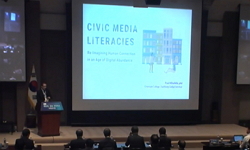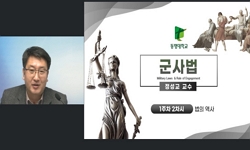Employee engagement has been the most widely researched area of human resource in recent times because of its practical importance in business organizations today. Engagement plays a major role as an antecedent in many organizational outputs like empl...
http://chineseinput.net/에서 pinyin(병음)방식으로 중국어를 변환할 수 있습니다.
변환된 중국어를 복사하여 사용하시면 됩니다.
- 中文 을 입력하시려면 zhongwen을 입력하시고 space를누르시면됩니다.
- 北京 을 입력하시려면 beijing을 입력하시고 space를 누르시면 됩니다.


Employee engagement as an antecedent of organizational commitment – A study on Indian seafaring officers
한글로보기https://www.riss.kr/link?id=A107383649
-
저자
Rameshkumar M. (International School of Management Excellence)
- 발행기관
- 학술지명
- 권호사항
-
발행연도
2020
-
작성언어
English
- 주제어
-
등재정보
KCI등재,SCOPUS,ESCI
-
자료형태
학술저널
-
수록면
105-112(8쪽)
-
KCI 피인용횟수
0
- DOI식별코드
- 제공처
-
0
상세조회 -
0
다운로드
부가정보
다국어 초록 (Multilingual Abstract)
Employee engagement has been the most widely researched area of human resource in recent times because of its practical importance in business organizations today. Engagement plays a major role as an antecedent in many organizational outputs like employee performance, commitment, and competitive advantage, etc. This research paper is aimed at identifying the factors contributing to employee engagement and its association with the affective, continuance and normative modules of organizational commitment among Indian ship officers. This research work attempts to explore the correlation existing if any, between work and organizational engagement variables with three aspects of organizational commitment. The whole study is mainly focused on seafarer’s perspective and so few alterations in questionnaires of engagement and commitments were made in discussion with experts from the shipping industry. This study confirms that employee engagement is positively associated with affective and normative components whereas, engagement is not significantly associated with continuance component of organizational commitment which is a contradicting result from existing studies where continuance commitment has reported a significant negative relationship with engagement. This study also discloses the fact that the engagement and commitment levels of officers working with deck and engine department did not contrast significantly, nor did they significantly differ between officers working in different types of ships, different designations and between officers with a different experience.
참고문헌 (Reference)
1 Schaufeli, W. B., "Work engagement: An emerging psychological concept and its implications for organizations"
2 Flemming, J. H., "Where employee engagement happens"
3 Khan, A. W., "To be fully there : Psychological presence at work" 45 : 321-349, 1992
4 Patrick W. Corrigan, "The stigma of mental illness: Explanatory models and methods for change" Elsevier BV 11 (11): 179-190, 2005
5 Salanova, W. B., "The measurement of engagement and burnout : A two sample confirmatory factor analytic approach" 3 : 71-92, 2002
6 Allen, N., "The measurement and antecedents of affective, continuance, and normative commitment to the organisation" 63 : 1-18, 1990
7 Macey, W. H., "The meaning of employee engagement" 1 (1): 3-30, 2008
8 Demerouti, E., "The job demands-resources model of burnout" 86 (86): 499-512, 2001
9 Hakanen, J., "The job demands-resources model : A three year cross-lagged study of burnout, depression, commitment, and work engagement" 22 : 224-241, 2008
10 Cook, S., "The essential guide to employee engagement" Kogan Page 2012
1 Schaufeli, W. B., "Work engagement: An emerging psychological concept and its implications for organizations"
2 Flemming, J. H., "Where employee engagement happens"
3 Khan, A. W., "To be fully there : Psychological presence at work" 45 : 321-349, 1992
4 Patrick W. Corrigan, "The stigma of mental illness: Explanatory models and methods for change" Elsevier BV 11 (11): 179-190, 2005
5 Salanova, W. B., "The measurement of engagement and burnout : A two sample confirmatory factor analytic approach" 3 : 71-92, 2002
6 Allen, N., "The measurement and antecedents of affective, continuance, and normative commitment to the organisation" 63 : 1-18, 1990
7 Macey, W. H., "The meaning of employee engagement" 1 (1): 3-30, 2008
8 Demerouti, E., "The job demands-resources model of burnout" 86 (86): 499-512, 2001
9 Hakanen, J., "The job demands-resources model : A three year cross-lagged study of burnout, depression, commitment, and work engagement" 22 : 224-241, 2008
10 Cook, S., "The essential guide to employee engagement" Kogan Page 2012
11 Robinson, D., "The drivers of employee engagement" Institute for Employment Studies 2004
12 Munro, B. H., "Statistical methods for health care research" Lippincott, Williams & Wilkins 2005
13 Gilliland, S. W., "Research in social issues in management : Managing social and ethical issues in organizations(Vol. 5)" Information Age Publishers 2007
14 Hewitt Associates LLC, "Research brief: Employee engagement higher at double digit growth companies"
15 Porter, L. W., "Organizational commitment, job satisfaction, and turnover among psychiatric technicians" 59 (59): 603-609, 1974
16 Turner, B. A., "Organizational and occupational commitment, intention to leave, and perceived performance of intercollegiate coaches" 19 (19): 193-211, 2005
17 Chalofsky, N., "Meaningfulness, commitment, and engagement:The intersection of a deeper level of intrinsic motivation" 2 (2): 189-203, 2009
18 Christina Maslach, "Job Burnout" Annual Reviews 52 (52): 397-422, 2001
19 Xu, J., "How can leaders achieve high employee engagement?" 32 (32): 399-416, 2011
20 Gbolahan Gbadamosi, "HRM and the commitment rhetoric: challenges for Africa" Emerald 41 (41): 274-280, 2003
21 Buchingham, M., "First, break all the rules: What the world’s greatest managers do differently" Simon & Shuster 1999
22 Murlis, H., "Engage employees and boost performance" Hay Group 2001
23 Goffman, E., "Encounters" Penguine University Books 1961
24 Mowday, R. T., "Employee–organization linkages : The psychology of commitment, absenteeism and turnover" Academic Press 1982
25 Kular, S., "Employee engagement: A literature review" Kingston University 2008
26 Sundaray, B., "Employee engagement : A driver of organizational effectiveness" 3 (3): 53-60, 2011
27 Yogendra BHATTACHARYA, "Employee Engagement as a Predictor of Seafarer Retention : A Study among Indian Officers" 한국해운물류학회 31 (31): 295-318, 2015
28 Jolliffe, I. T., "Discarding variables inaprincipal component analysis.I:Artificial data" 21 (21): 160-173, 1972
29 Cohen, A., "Career stage as a moderator of the relationship between organizational commitment and its outcomes : A meta-analysis" 64 : 253-268, 1991
30 Buckingham, M., "Canadian Government Executive"
31 Hakanen, J., "Burnout and work engagement among teachers" 43 : 495-513, 2006
32 Csikszentmihalyi, M., "Beyond boredom and anxiety" Jossey Bass 1982
33 Newman, D. A., "Been there, bottled that: Are state and behavioural work engagement new and useful construct; wines’?" 1 : 31-35, 2008
34 Baltic and International Maritime Council, "BIMCO/ISF manpower 2015 update: The worldwide demand for and supply of seafarers, main report" BIMCO/ISF 2015
35 Baltic and International Maritime Council & International Shipping Federation., "BIMCO/ISF manpower 2005 update: The worldwide demand for and supply of seafarers, main report" BIMCO/ISF 2005
36 Karrasch, A. I., "Antecedents and consequences of organizational commitment" 15 (15): 225-236, 2003
37 Alan M. Saks, "Antecedents and consequences of employee engagement" Emerald 21 (21): 600-619, 2006
38 Allen, N. J., "Affective, continuance, and normative to the organization : An examination of construct validity" 49 (49): 252-276, 1996
39 Wildermuth, C., "A perfect math: Decoding employee engagement – Part I: Engaging cultures and leaders" Emerald Group Publishing Limited 40 (40): 122-128, 2008
40 Steven P. Brown, "A new look at psychological climate and its relationship to job involvement, effort, and performance" American Psychological Association (APA) 81 (81): 358-368, 1996
동일학술지(권/호) 다른 논문
-
- 한국해운물류학회
- Mo Soo Won
- 2020
- KCI등재,SCOPUS,ESCI
-
- 한국해운물류학회
- 서지민
- 2020
- KCI등재,SCOPUS,ESCI
-
- 한국해운물류학회
- Othman Mohammad Khairuddin
- 2020
- KCI등재,SCOPUS,ESCI
-
Exploring the performance and competitiveness of Vietnam port industry using DEA
- 한국해운물류학회
- Kuo Kuo-Cheng
- 2020
- KCI등재,SCOPUS,ESCI
분석정보
인용정보 인용지수 설명보기
학술지 이력
| 연월일 | 이력구분 | 이력상세 | 등재구분 |
|---|---|---|---|
| 2024 | 평가예정 | 해외DB학술지평가 신청대상 (해외등재 학술지 평가) | |
| 2021-01-01 | 평가 | 등재학술지 선정 (해외등재 학술지 평가) |  |
| 2020-12-01 | 평가 | 등재후보로 하락 (해외등재 학술지 평가) |  |
| 2010-01-01 | 평가 | 등재학술지 선정 (등재후보2차) |  |
| 2009-06-01 | 평가 | 등재후보 1차 PASS (등재후보1차) |  |
| 2009-06-01 | 평가 | 학술지 분리 (기타) |
학술지 인용정보
| 기준연도 | WOS-KCI 통합IF(2년) | KCIF(2년) | KCIF(3년) |
|---|---|---|---|
| 2016 | 0.21 | 0.21 | 0.25 |
| KCIF(4년) | KCIF(5년) | 중심성지수(3년) | 즉시성지수 |
| 0.24 | 0.26 | 0.487 | 0.03 |




 KCI
KCI






